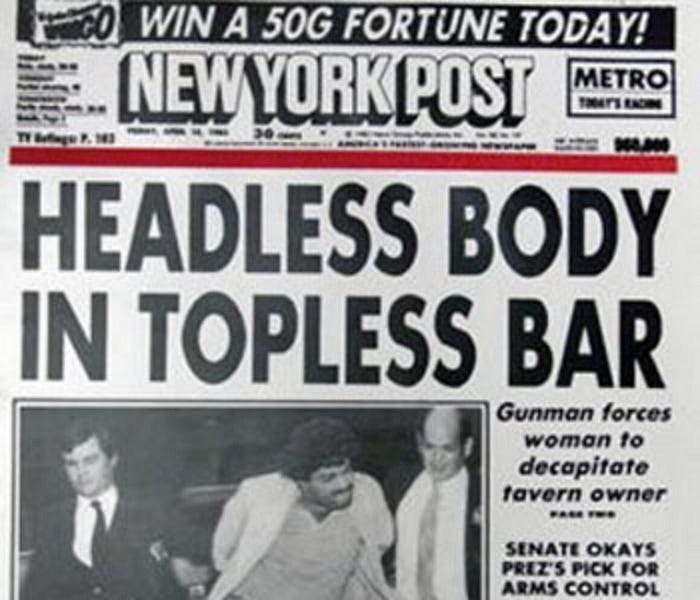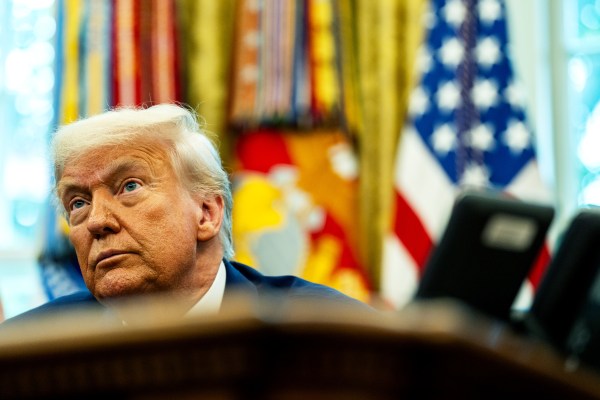Journalists can spend a fair amount of time discussing and defending their work on Twitter. But there is one complaint that readers should know will probably fall on deaf ears: headlines. Earlier this week Tom Nichols, a professor and author, shared on social media a piece he’d written for The Atlantic in February.
One of his followers responded: “This is a damn good analysis. Headline gives false hope, but I’d bet a buck Tom didn’t write it.”
Another Twitter follower pointed to Nichols’ byline, implying it was he who in fact wrote the headline. Nichols responded to the back and forth, ending the debate, “I did not write the headline. Most writers don’t.”
Headlines are important. They have the ability to draw readers into a piece that they otherwise might skip. They also have the ability to completely tank an article that is otherwise full of good information. How can you avoid reading a story with the headline “Underwear bandit caught, admits brief crime spree” or the infamous 1983 headline from the New York Post, “Headless body in topless bar”?
Headlines are the first thing news consumers see when searching for stories or columns to read. They are essential in trying to attract eyes on articles writers have spent hours—sometimes even days or months—working on.
And so it is surprising to learn that authors generally don’t write their own headlines. Different publications have different staffing and processes, but for the most part it’s a section or copy editor who writes headlines.
Think about the work that goes into putting out a newspaper, the print kind that leaves your fingers stained with ink. Headlines are dependent on an article’s length, the page’s design, and how many other pieces are on that page. They have to fit within a certain number of columns, and font size might be dictated by a page designer or the publication’s style guide.
“If you think about newspapers, there were column inches. There were fixed widths, and you had to have a headline that fit. So people developed the skill at writing headlines to fit with their particular paper’s style and layout,” Rutgers University history and journalism professor David Greenberg told The Dispatch. “You had to know what you were doing. There was a kind of technical precision to it.”
Former managing editor at the Washington Post Robert Kaiser, told The Dispatch that sometimes scheduling issues would determine who wrote the headlines on stories, along with the physical limitations, “You can’t write a headline until you know how the make-up editors wanted to display the story and have set a specific typeface and column width for that headline. In my day (before the internet), those make-up decisions were made in the evening, often after reporters had gone home.”
The headline writing process can cause some tension in newsrooms between writers and editors.Perhaps Peggy Noonan, Pulitzer Prize-winning columnist at the Wall Street Journal, put it best when she told The Dispatch: “I am deeply resentful that others write my headlines, and deeply relieved I don’t have to.”
While that tension exists between writers and editors, Noonan said she not only considers herself lucky that she sees and approves her headlines before her work is published, but that her editor, James Taranto, can make her columns better with the perfect headline.
“Sometimes I feel that when I’m getting myself in trouble with a piece James conspires to make the headline less piercing, to help me,” she said. “Sometimes when I keep almost, almost making a point in a paragraph and it somehow eludes me but I have to file, James finds and expresses the point in the headline, and I think ‘God, that’s what I meant!’”
Other writers have less luck with headlines. Greenberg reminisced about a specific instance while he was an editor at The New Republic. “I was editing something by the law professor Akhil Amar at Yale,” he said. “It had come in through a colleague, Jeff Rosen, who did our legal stuff, and Jeff said ‘Akhil doesn’t want to write the headline, but he asked if you could run it by him because the last piece he wrote for us got titled ‘Pounding Paula’ – which was about Paula Jones – and he wasn’t thrilled to have that on his academic C.V.”
Pat Fitzmaurice—editor at Tribune Content Agency—told The Dispatch his goal with headlines is to inform the reader of the content in the article and to try to have some fun, “That’s always when I feel the best about a headline, when I can do something clever, like if there’s a little bit of wordplay.”
As journalism migrated to the digital world, physical limitations became less of an issue but new considerations regarding distribution and readership mean that editors still hold on to that powerful job of assigning a headline to stories and columns.
Kaiser thinks that’s still necessary, even though web-based news is changing things. “Reporters are naturally promoters of their own work; if they could write the headlines, they would be likely to exaggerate the story’s appeal or importance, I fear,” he said. He added that headlines are so important that ultimately it is those near the top of the news structure that should be most responsible for what ends up at the top of a story, “Bad headlines cost the paper credibility, or appeal, or clarity. The top editors have to be responsible for them.”
While in the old days editors had to grapple with font size and column limitations, online editors deal more with questions about what will make a reader click when they are seeing a piece online, sometimes on social media, which strips some of the context that comes from reading a piece on a publication’s homepage. And then there is the 800-pound gorilla of search engine optimization.
Google defines SEO as “the process of making your site better for search engines.” The Poynter Institute advises focusing on four important things to include when writing an SEO-friendly headline: keywords, proper names, full personal names, and unique information. Poynter reminds headline writers to not lose focus of the point of a headline, “A word of caution: You are writing for readers, not search engines. Sometimes headline writers get carried away with SEO. It’s counterproductive to put these goals ahead of clarity and common sense.”
Focusing too much on SEO and not offering an accurate headline can naturally lead to bad headlines. If a headline writer is focused on getting a certain article to the top of an algorithm, they can lose sight of keeping a headline journalistically sound, and even worse, turning it into a fatuous clickbait-type headline.
As the internet really gained hold as a publishing platform in late 2000s and early 2010, those clickbait headlines felt like they were taking over the internet.
Upworthy, a digital media site that was started in 2012, is a prime example of this phenomenon. Just this past week the site had headlines such as, “Read the powerful, viral note this dad wrote to his makeup artist son’s bully.” and “79 years ago she quit high school when her husband went to war. Today, she got her diploma.” While these headlines are far from malicious, clickbait is clickbait, and it works.
NPR reported that at the peak of the site’s popularity, Upworthy boasted 90 million readers a month (that is, let’s just say, significantly more than The Dispatch … for now). However, in the fall of 2013 those numbers fell, and fell hard. By December 2014 the site was down to 20 million clicks per month.
What happened? Facebook changed it’s all-powerful algorithm to specifically exclude “clickbait-y” headlines, which the New York Times Magazine wrote about at length in 2017.
Chad Lorenz is a former news editor at Slate, and he spent a great deal of time focusing on headlines and promoting reporters’ work in his role. Threading the needle of writing a good headline while avoiding the clickbait trap comes down to honesty, Lorenz told The Dispatch. “The best way to be honest is to have a conversation with yourself, which is, ‘If I was shown this headline and I clicked into the story, would I be disappointed in what I’m getting on the other end of it?’”
He stressed that headlines should “entice, intrigue, or provoke” a reader to actually read the article beyond just the headline, and succumbing to clickbait ultimately is just “self-sabotage.”
“Headline writing is filled with unlimited possibilities,” Lorenz said. “You can really iterate on an idea and keep perfecting it.”
So, if you see a headline you think misses the mark of the actual article, don’t complain to the innocent writer. Blame the editor.







Please note that we at The Dispatch hold ourselves, our work, and our commenters to a higher standard than other places on the internet. We welcome comments that foster genuine debate or discussion—including comments critical of us or our work—but responses that include ad hominem attacks on fellow Dispatch members or are intended to stoke fear and anger may be moderated.
With your membership, you only have the ability to comment on The Morning Dispatch articles. Consider upgrading to join the conversation everywhere.